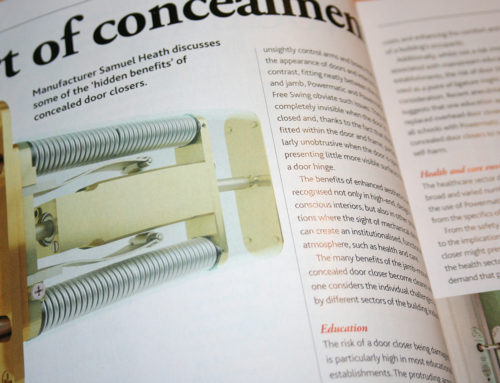If we were to believe the technology pundits, we could be forgiven for thinking that email and the various forms of e-marketing now available to us – e-shots, e-zines, e-news, etc. – has seen the death of direct mail via the postal system.
However, more and more companies are realising that e-marketing is not the panacea some would have us believe, and there is still a place for the traditional posted item, despite increases in postal charges.
Certainly e-marketing has its place, and the benefits of low cost, traceable results and precisely targeted messaging can be very tempting, but when selling these advantages, few e-marketing companies tell us that in order for the campaign to be successful, the message has to, first, reach the intended recipient’s inbox, second, be read, and third, be acted upon.
Of course, the same principles also apply to the ‘snail mail’ mailer; the right message has to reach the right contact in the right way and at the right time. When the message gets there, the success of the mailed item depends on how successfully the familiar marketing acronym of AIDA (Attention Desire Interest Action) has been applied in its creation.
Whilst posted direct mail is not as popular as it was before the advent of email, our experience suggests that it is far from dead and is unlikely to be for a little while yet.
So what tips the scales in favour of a posted item?
Firstly, the technophobic (or otherwise) tendencies of the intended recipients will have a bearing on the decision as to whether to opt for electronic or postal delivery. This may not necessarily apply to out and out technophobes either, but also those people who simply do not have time to go through their emails, Tweet, check their Facebook status and so on. Yes, despite what we hear on the news, whether we are too busy or too disinterested, many of us only dabble in the electronic world and then in a very selective way. Trying to reach this audience by electronic means is, quite obviously, nigh on impossible.
Next, the battle between spammers and IT security specialists has reached almost Cold War proportions, with firewalls, filters, anti-spam and many other measures being adopted to prevent unwanted email getting through to inboxes. Every new missile is greeted with a new anti-missile systems, which is countered by the latest anti-anti-missile system, and so on. Spammers and genuine e-marketeers are constantly trying to find ways round security systems, but they are all tarred with the same ‘spam’ brush. As soon as the e-marketeer finds a way through, the IT department finds a way to close the breach in its defences.
Finally, even with sophisticated electronic defence systems in place, many people still receive hundreds of emails a day, many of which are unwanted. Even if the message gets through to their inbox, a very cursory glance at the subject matter or the sender’s address is all it takes to make an instantaneous decision as to whether to keep or delete the message – it’s as easy as hitting a key on the keyboard!
In this morass of electronic messages, the chances of getting a message through and it being opened are slim.
Naturally, similar criticisms can be levelled at the traditional, posted direct mail item, but there are ways of increasing the chances of the item getting through, encouraging the recipient to read it and motivating them to take action.
There are other factors that give the argument for a posted mail item more weight:
- Fewer companies now have post rooms, secretaries and the like to take the burden of opening mailed items away from their executives, so the chance of the item getting through are improved.
- A mailed item has some intrinsic value, however small, so may be given a little more consideration.
- The relative rarity of a mailed item makes it more noticeable.
- A mailed item will probably spend a little more time in front of its recipient.
Whilst posted direct mail has its disadvantages, not least of which is the increased price of postage, it does still have its place.
Before embarking on any direct marketing campaign, whether delivered electronically or by post, a thorough cost/benefit analysis needs to be undertaken. Certainly, rising postal charges and the relative cheapness of e-marketing will have a huge bearing on the final decision, but this has to be weighed against the likelihood of success.
If you need a little help in considering your options and some advice on how to get the best from electronic, postal, or combined, direct marketing campaigns, give us a call; our knowledge and experience could be the difference between success and failure.





